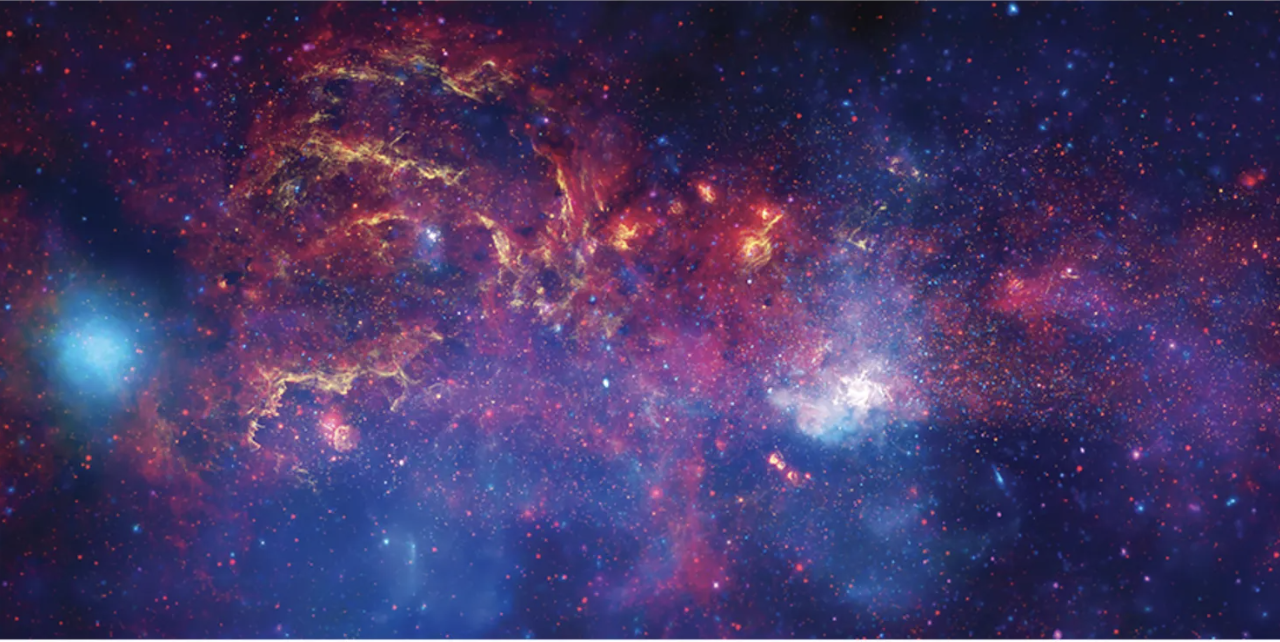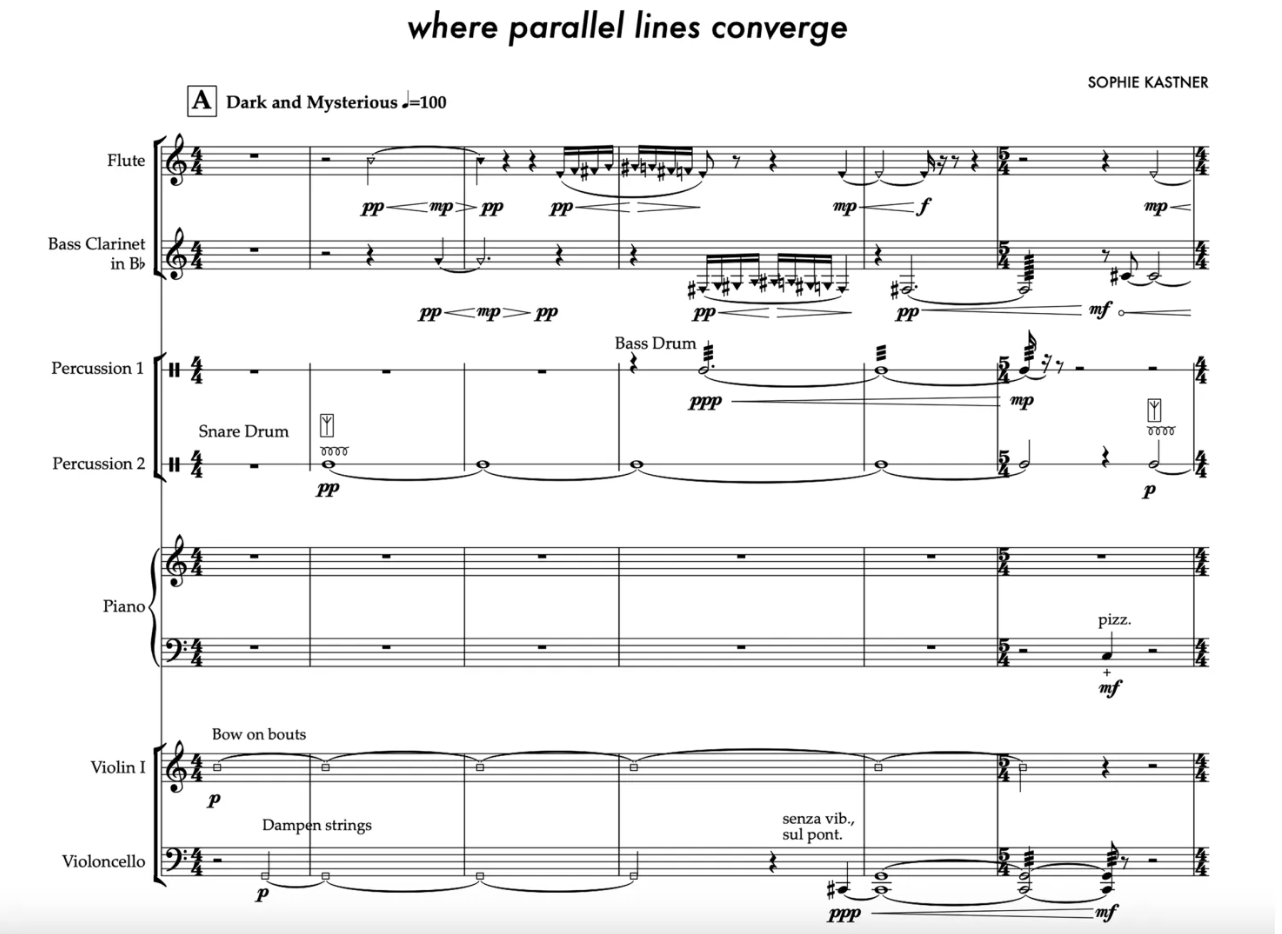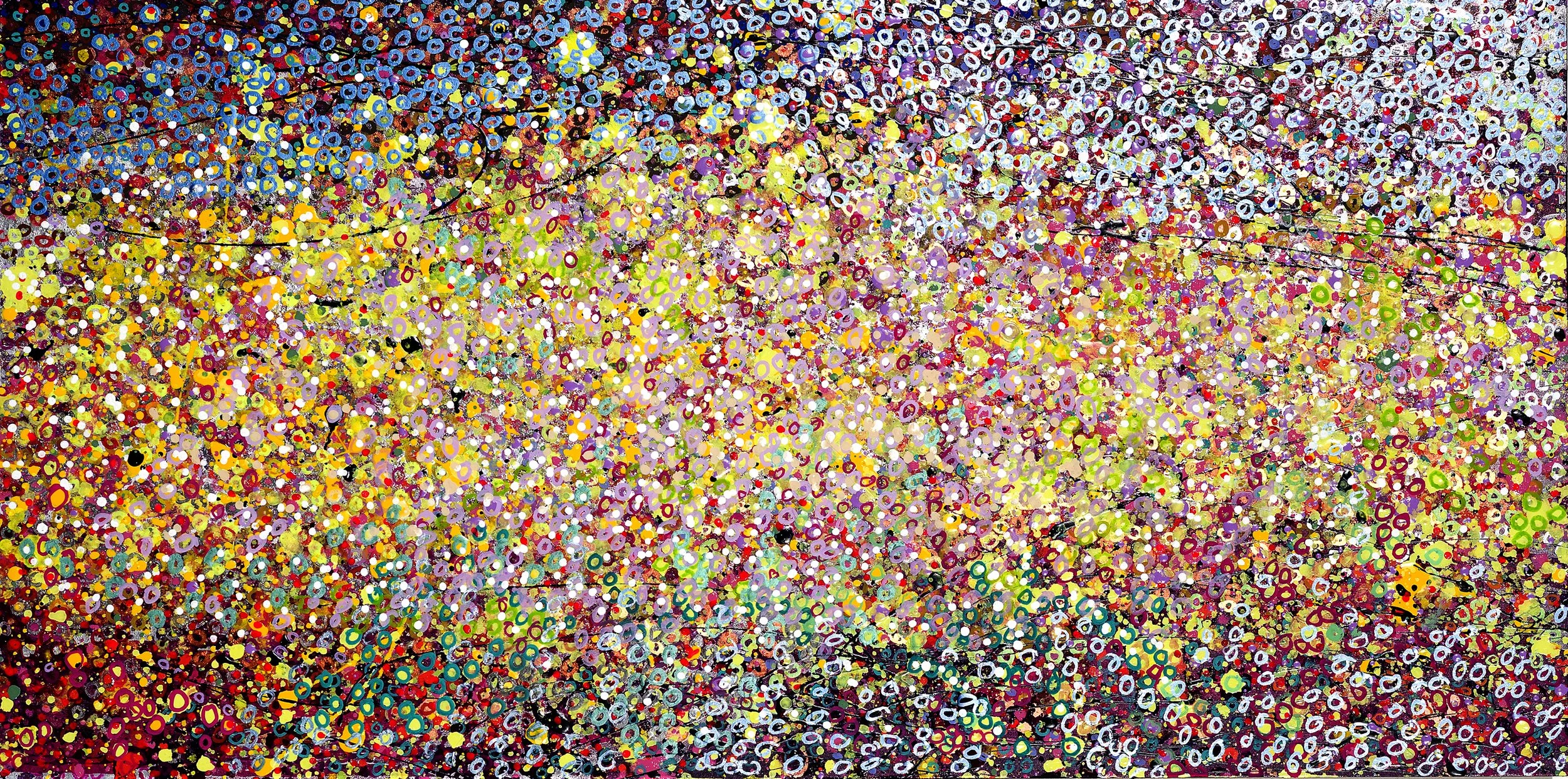AN ONCOLOGIST AND AN ARTIST WALK INTO A BAR . . .
After my opening at the Soprafina Gallery in Boston several years ago, friends invited me to dinner with their friends—an oncologist* and his wife. Over the meal he told me about his research. He had access to mountains of data collected from patients over many years, and he and his team were struggling to mine the information for patterns that might predict cancer. This was before artificial intelligence could handle such a task, and he had resorted to color-coding the data. I told him he was heading for trouble. Too many variables, too many hues—especially since a good number of men are color blind. If he insisted on color, I suggested the Munsell system, which accounts not only for hue but also for value and intensity, making it far more precise.
Image of a breast cancer tumor.
But then another thought struck me. I told him he should assign musical notes to different factors, and that when certain factors combined to signal the onset of cancer, the notes would form a dissonant chord. He could listen to his data instead of only looking at it, scanning for the places where the sound jarred. He seemed surprised, but I knew it made sense. Our ears are tuned to notice what doesn’t belong. A sour note will leap out of a phrase in a way that a misplaced color in a tangle of codes might not.
The Munsell Color System
I later learned that scientists do something similar with the universe. Telescopes gather information about radiation and light far beyond human vision, and researchers translate it into sound. Different types of objects in the sky are assigned specific tones, and when they "listen" to their data, patterns emerge: the voice of a pulsar, the silence surrounding a black hole, and the harmonics of a galaxy. It is a reminder that the universe has always been a kind of score, written in frequencies we can’t see but sometimes can hear.
For me, that conversation with the doctor confirmed something I have felt all along—that meaning lives in patterns, and patterns can cross boundaries between the senses. Geometry becomes music, music becomes light, and all of it is simply vibration. Whether in a cathedral window or a medical dataset, harmony and dissonance reveal the truth that lies beneath the surface.
That conversation stayed with me. The idea that dissonance could reveal cancer, or that a telescope could translate the unseen universe into music, felt strangely familiar. It echoed what I was already doing in my studio, though I hadn’t put it in those terms before. My paintings are built from frequencies—layers of marks and decisions that accumulate until they hum in a certain way. Sometimes I think of them less as images than as fields of vibration, where the harmony or tension between elements gives rise to the experience, like messages folded into the paint. In a sense, I am listening to the painting as much as I am looking at it, waiting for the chord that tells me it is alive.
A small region at the center of our Milky Way galaxy where a supermassive black hole resides.
Since that first conversation with the doctor many years ago, researchers have begun experimenting with the sonification of cancer data in ways that echo what I suggested. Scientists have converted optical scans of breast tissue into sound, allowing listeners to hear the difference between tumor and healthy fat. Others have created auditory tools for surgeons, where shifts in pitch or timbre help them locate tumor margins more accurately during breast-conserving surgery. Still others have turned gene-expression data into music, using melodies and harmonies to highlight similarities between tumor types. These projects all confirm that sound can reveal patterns hidden in visual data, making dissonance and harmony not only metaphors, but practical tools for discovery.
For me, it is deeply affirming to see science moving in this direction. What began as an intuitive suggestion to a doctor—that meaning might be heard as well as seen—has become a method that researchers now use in the lab and the operating room. It reminds me why I have always thought of my paintings not just as images, but as fields of vibration, places where harmony and dissonance reveal themselves over time. Whether through sonified cancer scans, the “voices” of distant galaxies, or layers of paint on a canvas, the principle is the same: the world is made of patterns, and we are learning to listen.
*David H. Sherr, Ph.D.
Emeritus Professor
Department of Environmental Health
Boston University School of Public Health





